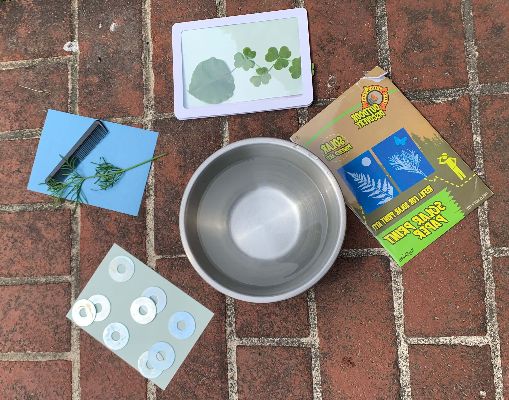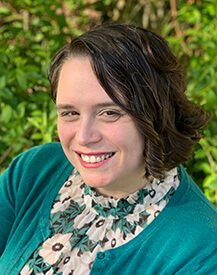Sun and Sunscreen
Sun Activities for Preschool
Looking for sun activities for preschool? Check out these fun sun lesson plans for preschoolers.

Supplies needed:
- UV sensitive beads
(for younger learners, pre-string them on a looped pipe cleaner or elastic) - Pony Beads (for younger learners, pre-string them on a looped pipe cleaner or elastic)
- 6-12 Plastic Cups
- Cling Wrap
- Sunscreens with different SPF ratings
- Spray Sunscreen
- T-shirt
- Sunglasses
- Sunshine or a UV flashlight
- Sunprint paper
- Assortment of objects to lay on your sunprint paper- natural and manmade (leaves, petals, sticks, stems, rocks, sand, feathers, bark, flat toys, washers, tools, cookie cutters, foil, paper, fabric, etc.
- Bowl or bucket of cold water
Make observations about the UV sensitive beads.
Give your students a small amount of the UV Beads and regular plastic pony beads to observe. How are they alike and how are they different? Bring the beads outside and repeat the process.
Exploration Questions:
Did the beads change color in the classroom?
How is the light in the classroom different from the light outside?
Can you predict what color the beads will be in the sun?
Do the beads get darker the longer they are in the sun?
If you were to hold the beads tightly in your hand or place them in your pocket for a few minutes, what do you think will happen?
Lead a discussion about staying safe in the sun.
Too much sun is not good for our skin. While the UV light from the sun can cause damage to our skin, there are lots of things we can do to keep ourselves safe when we play outside. Start a list of things students can do to stay safe in the sun like wearing protective clothing, finding shade, and, of course wearing sunscreen.
Use the UV beads to test the best ways to stay safe in the sun.
Gather 6-12 plastic cups and place UV beads in the bottom. Cover the tops of each cup with plastic cling wrap. Add one method of sun protection to each cup and place them outside for 3-5 minutes on a sunny day. Label each cup. Some suggestions for sun protection:
- Choose different types of sunscreen - spray, lotion, stick- and different SPF ratings to test
- Cover a cup in a t-shirt to test how clothing can keep you safe from the sun
- Position the lens from a pair of sunglasses on top of one of the cups
- Place one cup in the shade
- Leave one cup without any protection as a control- to see what no sun protection looks like.
Exploration Questions:
Which beads do you predict will change color and which will not?
How are the beads like your skin?
What do you think would happen if you combined sunscreen and another protective material like a t-shirt, shade, or sunglasses?
Make art using the UV light from the sun.
Follow the directions that come with the sunprint paper of your choice. Here are some tips to get the most out of your sunprints:
- Flatter objects will give a clearer outline, but distortions from 3D objects can be neat to experiment with
- Mix natural and manmade objects for interesting patterns
- Experiment with layering- lay a fine mesh or tulle under or over other objects to add a neat pattern
- Watch out for windy conditions (and impatient little artists)- weigh the objects down as much as you can without affecting your pattern
- Let the paper dry flat in the classroom
- Images will sharpen up as the paper dries
Background Insights
The sun produces many different kinds of energy. Some of that energy we can see- the light that makes daytime bright - and some we can’t. Ultraviolet light is just one type of energy from the sun that we can’t see. It’s a powerful form of energy that can damage the cells of our body. The UV beads contain a pigment that only reacts to the invisible UV light from the sun- not the visible light. That’s why they don’t change color under the lights in your classroom!
 Hollie is certified K-8 teacher who has been educating in the informal education field since 2005. She has developed and implemented countless exciting STEAM programs for families, classrooms, and teachers focused on the natural world, the scientific process, and ancient life. Her professional passions are inquiry, whole family learning, experiential learning starting in early childhood, and the intersection of literacy and science instruction.
Hollie is certified K-8 teacher who has been educating in the informal education field since 2005. She has developed and implemented countless exciting STEAM programs for families, classrooms, and teachers focused on the natural world, the scientific process, and ancient life. Her professional passions are inquiry, whole family learning, experiential learning starting in early childhood, and the intersection of literacy and science instruction.
She has recently developed a community-based program that encourages families to use dramatic play to learn science, increase literacy skills, and have fun together for which she received the Drexel University Presidential Award for Civic Engagement. She is most proud of her work on a popular science storytelling program for preschool families and classrooms that combines a book club format with engaging programs, innovative curriculum, and a hysterical puppet storyteller.
